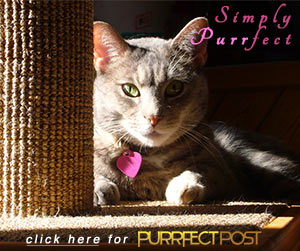Feline Myths and Misconceptions Part Two
 In Part 1, we explored some myths and misconceptions about cats. Here, we continue to debunk commonly held false ideas about our feline companions.
In Part 1, we explored some myths and misconceptions about cats. Here, we continue to debunk commonly held false ideas about our feline companions.
Myth 6: Cats and Dogs Can't Get Along
Cats and dogs can get along, have gotten along, and will get along. Many families have both cats and dogs that not only tolerate but also enjoy one another’s company.
Proper introduction and a little time and patience, is required to introduce older cats and dogs. Puppies and kittens are much easier and get used to each other’s company much more quickly.
Myth 7: Cats Always Land on Their Feet
The athletic and agile cat has a natural twisting instinct to enable her to try to land on her feet. She can do so from many different heights.
One unfortunate consequence of this myth is children dropping cats in order to see if it is true. Even if a cat does land on her feet, she can most certainly break bones in her paw, legs, shoulder, etc., especially if dropped from a considerable height.
A cat’s twisting instinct will not work every time, particularly if she is injured, surprised, sick, or disoriented for some reason.
Myth 8: An Outdoor Cat Can't Be Changed to an Indoor Cat and Will Be Unhappy
Indoor cats need access to healthy food, fresh water, a window perch with a view outdoors if at all possible, toys, and a good form of exercise such as a large, secure scratching post.
While it is easier to raise a cat as an indoor cat, an outdoor cat will adjust to indoor living given time.
An excellent way to make the adjustment easier and allow any indoor cat great enjoyment is to provide regular access to an outdoor cat enclosure.
Learn more here: "How to Decide on an Indoor or Outdoor Lifestyle for Your Cat."
Myth 9: Cats Can Have Cow's Milk
We have all seen the picture of the cute and happy kitty lapping up a bowl of milk. Unfortunately, cow’s milk is not good to feed to cats.
Most cats are lactose intolerant after kittenhood and will develop digestive problems as a result of ingesting cow’s milk. The only way to know if your cat is lactose intolerant is to test it and serve milk to see if he becomes ill. Digestive problems including diarrhea can turn into more severe problems such as dehydration and not only cause distress for the cat, but also become a cause for veterinary care.
Learn More: "Cats and Milk."
Continue to learn about more feline myths in the next section of this article: "Feline Myths and Misconceptions Part Three."You May Also Like These Articles:
Feline Myths and Misconceptions Part One
Feline Myths and Misconceptions Part Three
Feline Myths and Misconceptions Part Four
Cat Myths: Separating Fact from Fiction
How to Decide on an Indoor or Outdoor Lifestyle for Your Cat
Notice: Ask-a-Vet is an affiliated service for those who wish to speak with a veterinary professional about their pet's specific condition. Initially, a bot will ask questions to determine the general nature of your concern. Then, you will be transferred to a human. There is a charge for the service if you choose to connect to a veterinarian. Ask-a-Vet is not manned by the staff or owners of CatHealth.com, and the advice given should not delay or replace a visit to your veterinarian.




